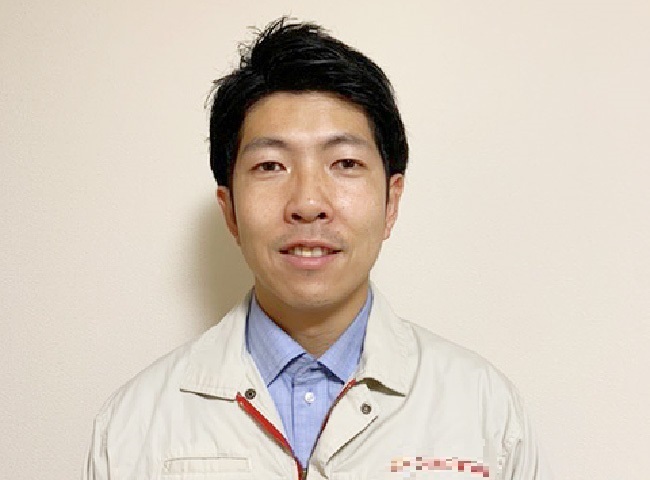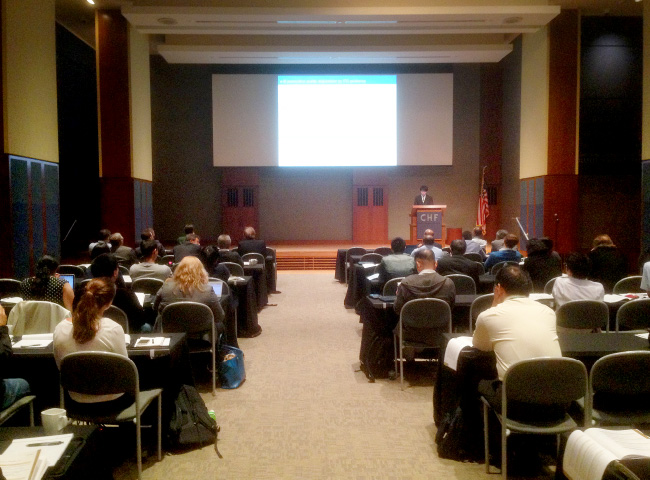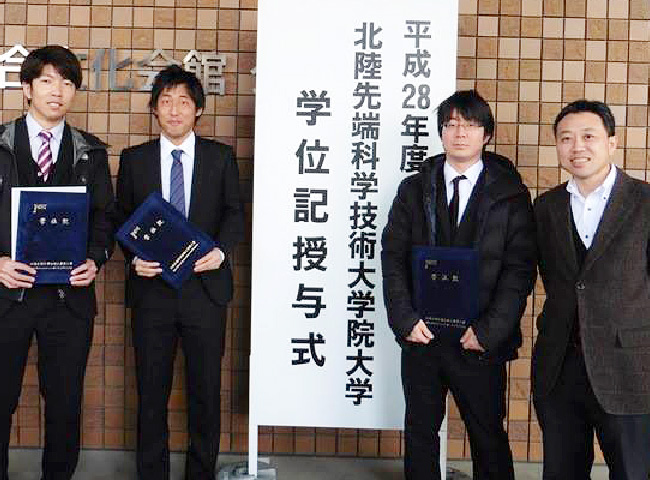Graduates Voice

【Research at Ohdaira-Lab】
ITO sputtering damage to Cat-CVD amorphous silicon passivation films and its recovery.
Why did you choose Ohdaira-lab?
I was working for another company when I found the exhibition booth of Ohdaira-lab in PV Japan, currently known as Photovoltaic Solar Exhibition & Forum, and learned that the research on Si solar cells was conducted by Cat-CVD technology there. As my former job was related to CVD apparatus and I had wanted to work for PV industry, I strongly got interested in the research in Ohdaira-lab, and decided to study solar-cells technology more in JAIST.
What was your research theme in your master’s course?
My research theme was about ITO sputtering damage to silicon heterojunction (SHJ) solar cells with Cat-CVD a-Si passivation films and its recovery. Nowadays, most solar cells on the market are Si-based and SHJ solar cells especially attract attentions because of its higher efficiency among them. It has been realized by combining crystalline silicon (c-Si) with amorphous silicon (a-Si).
ITO is applied to fabricating SHJ solar cells as a carrier transport layer on a-Si. However, there has been a problem that the degradation of passivation quality is caused by plasma damage to a-Si films during ITO deposition by conventional sputtering. In Ohdaira lab, a-Si passivation films with high quality can be prepared by Cat-CVD technology. I investigated the causes of damage on Cat-CVD a-Si films and found out the method of its recovery.
The memory of your student life in JAIST and Ohdaira-lab


As I entered JAIST after quitting my former job, it was hard for me to study again and catch up with lectures. Other members in Ohdaira-lab kindly helped me a lot and I managed to do that. I remember I studied so hard from morning until night before exams.
Maybe it was the time when I studied the most in my life.
In Ohdaira-lab, daily research activities are planned and conducted by individual students along with their own themes. While doing experiments, I tried making time for studying photovoltaic technology more. I planned study meetings with other members and applied for presentations in international conferences. That helped me to develop my knowledge. Furthermore, I leaned that thinking by myself and challenging difficulties were important to solve problems. Although I took Mα course, which usually takes three years to be finished, I completed my master’s degree in two years thank to kind supports from everyone in Ohdaira-lab.
Climbing Mt. Hakusan is one of my best memories in Ohdaira-lab. It was so exciting to see the sunrise from the top of the mountain. Besides, winning JAIST softball tournament, eating out to town in Kanazawa after Saturday’s meeting, enjoying BBQ and cherry-blossom viewing were good memories too.
Message and advice for students who have an interest in Ohdaira-lab

JAIST is located far from town, so it seemed for me to be isolated at first. However, my student life was so wonderful that I felt the two years flew by. JAIST has an excellent environment for studying and doing researches. That is the same for students like me, who want to study again after working experiences.
I recommend you to do your best toward your goals. In Ohdaira-lab, there are a lot of opportunities such as presentations in international conferences and writing papers as a first author. Because these achievements were evaluated, I was fortunately exempted from refunding my scholarship. There is another good thing in Ohdaira-lab; you can get used to waking up early due to every morning’s meeting.